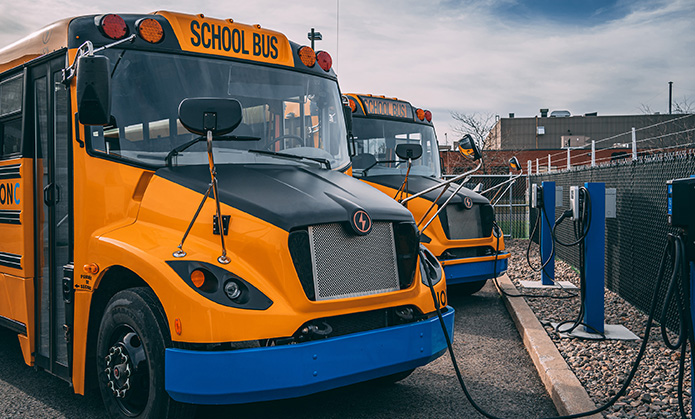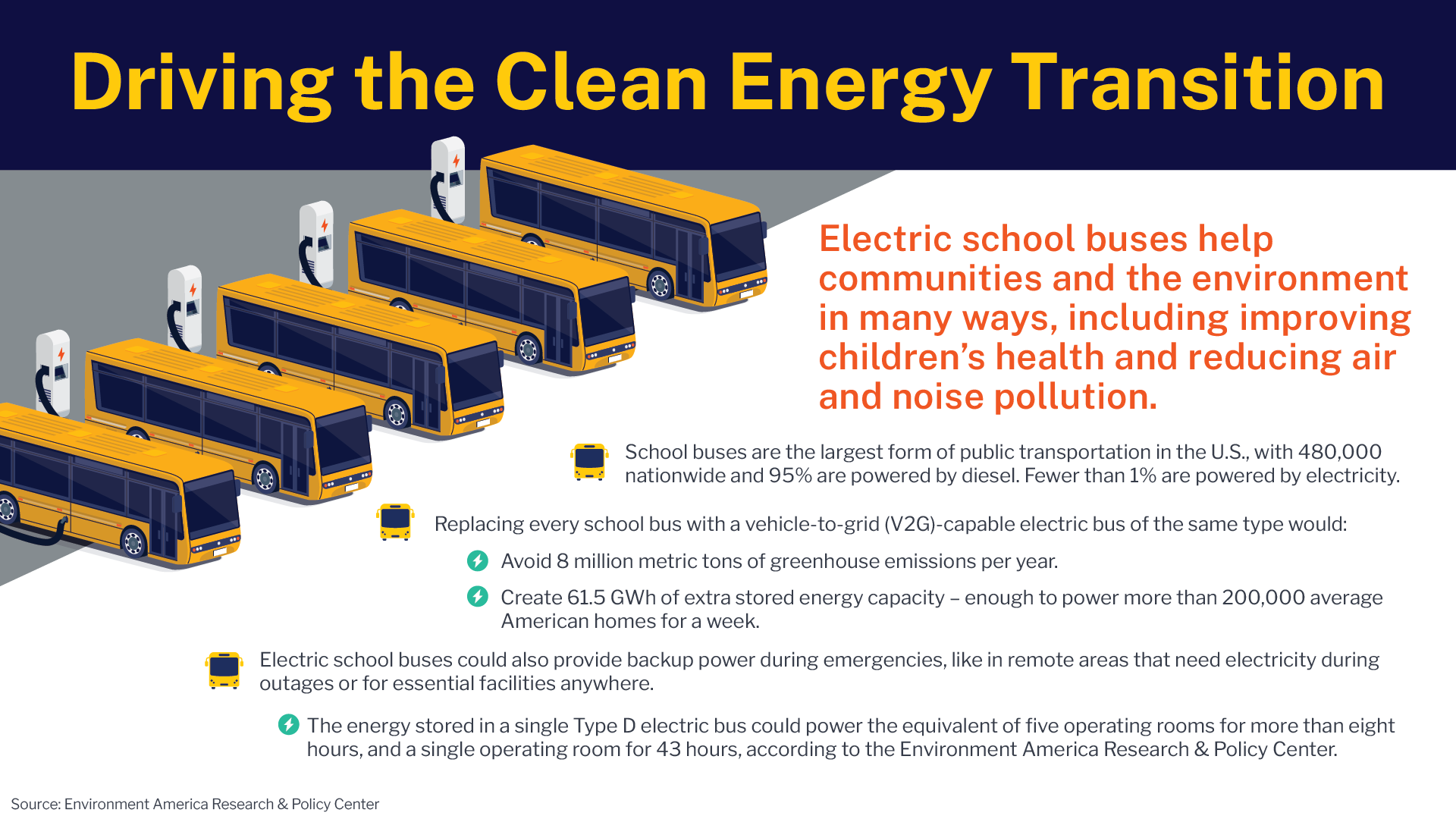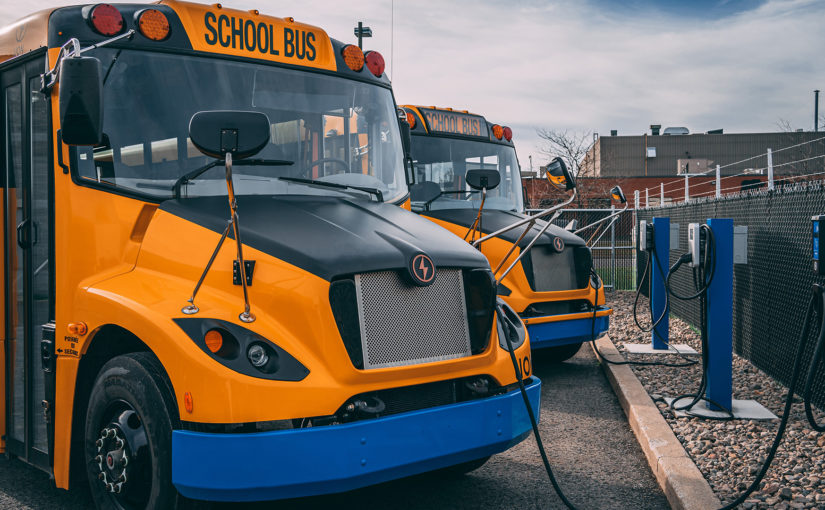CPower Expands EnerWise® to 40 New Sites Across PJM, Launches in New England
Three Reasons Why Your DER Strategy Isn’t Working

The next phase of a reliable and clean energy mix will center on deploying more distributed energy resources (DERs) and using them efficiently.
DERs have become increasingly prevalent, largely due to available market revenue streams, opportunities for demand charge mitigation, falling hardware prices for storage and renewable generation and deployment incentives like those in the Inflation Reduction Act. However, up until now, DERs have been mostly used through strategies centered solely on either tariff-based cost avoidance or confined to limited grid services program participation.
DER project owners and operators that only focus on cost avoidance or just participate in capacity programs, which require load reduction commitments ahead of time, often leave value on the table. To unlock the full value of DERs, owners and operators must balance priorities and make decisions based on changes in conditions like asset availability and market prices for energy resources. Only then will DERs fully contribute to a Customer-Powered Grid™ that enables a flexible, clean and dependable energy future.
Common Hurdles to Maximizing DER Value
Maximizing DER value requires a comprehensive strategy. If you do not earn as much grid services revenue as possible and achieve the on-bill savings that you could, your DER strategy may not be working for one or more of the following reasons.
1. The strategy doesn’t consider all DERs.
DERs are any asset that consumes, generates or stores electricity. Or, to put it more simply: If it can reduce demand “behind the meter,” it can be considered and included in your DER strategy. These can be generation assets like generators, solar, co-gens and storage, but can also include energy curtailment and even energy efficiency.
The supply of flexible DERs, including load curtailment, onsite storage, electric vehicle (EV) fleets and other resources, is set for massive growth because the grid needs more flexibility to avoid failures caused by an aging infrastructure and the rising penetration of intermittent, renewable generation.
DERs that can be enrolled in demand response (DR) programs with short lead times, called on frequently, and be highly automated are particularly valuable. DR is the largest DER available in the market, and you don’t need anything other than the flexibility to curtail load to benefit from it.
As the need for flexibility increases even further, and existing and new DERs are incentivized to participate, including all your DERs in your strategy will become ever more important. Accounting for all your DERs is crucial because the more flexibility they collectively provide, the more valuable they are to the grid.
2. Underlying goals and the programs that will help achieve them haven’t been identified.
Unlocking latent DER value often begins with determining your goals. For example:
-
- Are you pursuing all available financial benefits? Such as on-bill savings, grid service revenues and incentives? Optimizing returns requires considering all simultaneously.
- How important is resiliency? Do you want to avoid business interruptions and associated revenue losses? Do you need back-up power? And, if so, what’s your non-emergency strategy for these assets? You may be able to earn revenue by supplying flexible capacity to the grid or to save money by using on-site generation and/or storage assets to reduce demand.
- How can your DERs support your organizational objectives for sustainability? Customers and partners increasingly want to do business with organizations that share their concerns about helping the environment. You may also have to comply with regulations like limits on carbon emissions.
The best strategy for your facility will accomplish all your goals within a comprehensive framework of programs.
3. There is not an efficient plan for implementing DERs.
Unlocking the maximum earning potential of a suite of energy assets in complex markets requires creativity, focus and sophistication. Multiple DER projects, implementers and consultants can result in conflicting strategies.
Unfortunately, however, when it comes to problems that owners and operators face in optimizing their DERs, most solutions fall short in one or more areas. They:
-
- Solve for grid services or on-bill savings – but not both.
- Support only one type of DER asset – not multiple.
- Depend on manual workflows and processes – instead of automation.
If a solution doesn’t solve for both grid services and on-bill savings, support multiple types of DERs and also automate workflows and processes, then your DER strategy doesn’t work. Therefore, you do not maximize the return on investment (ROI) in your DERs.
A Single Solution for DER Optimization
However, optimizing your DERs does not have to be complex. CPower’s EnerWise® Site Optimization solution can help you fully unlock the combined value of grid-services revenue and on-bill savings – in a single solution.
In automatically identifying and executing the most lucrative energy management strategies across on-bill savings and grid services programs and the different types of DERs, EnerWise addresses all the challenges around the optimization of DERs. A virtual energy manager, it maximizes the financial return, resiliency and sustainability benefits of energy storage, onsite and renewable generation and other DERs.
For example, in terms of financial benefits, EnerWise can help you:
-
- Easily estimate and deliver the value from DER projects.
- Justify DER investments and generate forecasted revenue and projected savings.
- Shorten your DER project’s ROI horizon and maximize the financial return.
It also offers resiliency benefits such as:
-
- Avoiding business interruptions by ensuring that back-up power is available.
- Optimizing DERs’ usage according to resource and regulatory constraints.
- Leveraging automated scheduling technology to manage your resources 24 hours a day.
And, when it comes to sustainability, EnerWise can:
-
- Support organizational sustainability goals.
- Redirect carbon-free power to help grid operators reduce reliance on fossil fuel resources.
- Enable the transition to a cleaner and more reliable grid.
EnerWise has been named a finalist in the prestigious 2023 Edison Awards due to the energy optimization technology’s ability to help DER owners and operators get the most out of their assets. It is being honored in the Innovative Solutions and Services category for simplifying the approach to participation in multiple energy-market and utility programs.
Through its dynamic hourly scheduling customized for each site, EnerWise ensures each DER is allocated to the most lucrative available programs on an hourly basis, with one site averaging a 54% increase in grid revenues. It has expanded to 40 new sites across PJM and recently launched in ISO-New England.
EnerWise has drawn strong interest from DER owners and operators across crypto mining, government, education, manufacturing, retail and other commercial sectors who want to gain access to new value streams from their DERs.
If you would like to learn more about EnerWise or other ways to optimize your energy assets, call us at 844-276-9371 or visit CPowerEnergy.com/contact to find out how we can help you create and implement a DER strategy that works.
CPower Named as a Finalist in the Prestigious 2023 Edison Awards
CPower Ready To Help School Districts Unlock Full Value of Electric School Buses Through Federal Rebate Program

Photo Credit: Lion Electric
School districts have three months to buy almost $1 billion of clean school buses and infrastructure with federal rebates. Districts will then turn their attention to receiving their electric or alternatively-fueled buses and installing infrastructure — and CPower can help.
CPower helps districts with electric buses reduce their electrification costs, increase their communities’ resiliency and green the grid, through partnerships with EV fleet owners, charging operators and schools across the country.
The U.S. Environmental Protection Agency’s $5 billion Clean School Bus Program, a five-year program, is accelerating the greening of fleets through electrification. In its first round of funding, the EPA awarded a total of $948.8 million in 2022 Clean School Bus rebates to 403 applicants in October.
Selectees have until April 28 to submit payment request forms for eligible zero-emission and low-emission buses and infrastructure to the EPA. The EPA expects the 2022 rebate program to fund approximately 2,500 school bus replacements. Funds come from one of two separate pools, one for Zero-Emission (ZE) Buses and one for Clean School Buses, which can include alternatively-fueled buses in addition to electric buses.
Transitioning to electric school buses helps communities and the environment in many ways, including improving children’s health and reducing air and noise pollution, according to the Environment America Research & Policy Center. Electric school buses equipped with vehicle-to-grid (V2G) technology that enables them to deliver power to buildings and back to the grid provide additional benefits as well.

The Environment America Research & Policy Center notes:
-
- School buses are the largest form of public transportation in the U.S., with 480,000 nationwide and 95% are powered by diesel. Fewer than 1% are powered by electricity.
- Replacing every school bus with a V2G-capable electric bus of the same type would:
-
- Avoid 8 million metric tons of greenhouse emissions per year.
- Create 61.5 GWh of extra stored energy capacity – enough to power more than 200,000 average American homes for a week.
-
- Electric school buses could also provide backup power during emergencies, like in remote areas that need electricity during outages or for essential facilities anywhere. For example, the energy stored in a single Type D electric bus could power the equivalent of five operating rooms for more than eight hours, and a single operating room for 43 hours, according to the Environment America Research & Policy Center.
Though the V2G technology that the Environment America Research & Policy Center advocates for is still in its infancy, researchers note, removing adoption barriers through means such as policy changes and program funding could facilitate the transition to electric school buses by making investments in buses and infrastructure financially feasible for districts. The EPA’s Clean School Bus Program is a step forward in that regard, helping to roll out thousands of cleaner, quieter electric school buses in districts nationwide.
Districts have also pushed ahead independently. For example, CPower is turning the country’s largest electric school bus fleet into grid-ready resources by partnering with Highland Electric Fleets and Maryland’s Montgomery County Public Schools (MCPS).
MCPS notes the partnership will deliver cleaner, healthier transportation for students and communities while supporting grid reliability through demand response solutions. Together, the partners will use MCPS’s fleet of EV school buses (EVSBs) to provide grid services and increase reliability for PJM, the largest grid operator in the U.S.
Because school buses run on a consistent daily schedule, electric buses such as those that Highland provides to MCPS are ideal resources to provide grid resiliency services. CPower will ensure that buses are fully charged and ready to run while also allowing Highland to reduce electrical loads when needed, thereby helping to keep the grid in balance.
CPower similarly helps grid operators balance energy demand and supply through a partnership with bp pulse for fleets (formerly AMPLY), which provides fully managed charging services to public sector and commercial businesses with EV fleets. The partnership also drives new revenue opportunities for fleets while offering transmission and distribution grids the flexibility to integrate V2G-ready EV chargers as distributed energy resources (DERs). The Logan Bus Company, the largest school bus provider for the New York City Department of Education, is the first project to leverage this partnership.
As the national leader for grid balancing and reliability solutions, CPower is helping to create a Customer-Powered Grid™ that will enable a flexible, clean and dependable energy future. Helping school districts transition to electric school buses helps bring that future to fruition.
For more information on how we can help your school district unlock the value of your EV school bus fleet to drive energy flexibility, grid reliability and revenue opportunities, call us at 844-276-9371 or visit CPowerEnergy.com/contact to find out.
Brad Widdup
Brad is Director, Distributed Generation at CPower. His 25 years in the energy industry include serving as regional vice president for Oracle’s Utilities Global Business Unit.
CPower at Intersolar/Energy Storage North America!
Geneva Businesses Get Paid for Reducing Power Use to Ensure the Community’s Lights Stay On
CPower Signs United Nations-Led 24/7 Carbon-free Energy Compact
Customer DERs Relieved Grid Strain and Reduced Electricity Demand During Winter Storm Elliott

CPower customers helped grid operators avoid blackouts by providing over 50 GWh of electricity reduction during Winter Storm Elliott. Customers responded to 197 unique dispatches across three demand response programs in PJM and ISO-NE alone, which together cover all or part of 19 states and Washington, D.C.
In quickly curtailing their loads, CPower customers helped the PJM and ISO-NE regions avoid grid failures as freezing weather caused widespread power outages elsewhere in the country over the two days before Christmas.
“This storm underscores the increasing frequency of significant extreme weather events (the fifth major winter event in the last 11 years) and underscores the need for the electric sector to change its planning scenarios and preparations for extreme events,” NERC President and CEO Jim Robb said, in announcing that FERC, NERC and NERC Regional Entities have launched a joint inquiry into the operations of the bulk power system during Winter Storm Elliott.
With extreme weather events occurring more often, in both winter and summer, regulators and grid operators increasingly look to customer DERs to keep the power on during times of high energy demand. CPower customers, for example, were dispatched a record 1,030 times in 2022.
Electricity Reduction was Key in Winter Storm Elliott Response
During Winter Storm Elliott, CPower customers responded to dispatched events in PJM’s Emergency Capacity and Synch Reserves DR programs as well as ISO-NE’s Active-Demand Capacity Reserves (ADCR) program. The PJM Emergency Capacity dispatches were the program’s first winter events since the 2014 Polar Vortex.
PJM dispatched roughly 4,000 MW of DR on Dec. 23 and another 7,000 MW on Dec. 24 as capacity dropped and demand rose. Power demand rose to a peak of 135,000 MW on the evening of Dec. 23 while forced outages reached as high as 34,500 MW. Demand then remained high overnight, thereby preventing some power plants from replenishing their fuel supplies. By the time the morning peak came on Dec. 24, which was the coldest day of the Christmas weekend, PJM was missing approximately 57,000 MW of its generation flee due to winter storm challenges.
Similarly, unexpected generator outages and reductions and lower-than-expected imports led to a shortfall in operating reserves in ISO-NE, prompting the grid operator to dispatch DR twice as part of its efforts to balance supply and demand and maintain reliability on the regional power system during the evening peak hours of Dec. 24. ISO-NE declared a capacity deficiency and implemented measures under Operating Procedure No. 4 (OP-4) after 2,150 MWs of resources scheduled to contribute power during the evening peak became unavailable. Measures included using reserve resources to balance supply and demand and requesting conservation at market participants’ facilities.
DER Participation Alleviates Grid Strain During Extreme Weather
Historically, grid operators have called upon customers for load relief in summer months when demand has typically been highest due to extreme heat. However, winter electricity demand has increased in recent years due to extreme cold and heating electrification. For example, industry leaders cited big growth in electric heat as a chief cause of blackouts during Winter Storm Elliott, noting that over the past decade the number of households heated with electricity had surged by about 20% in the hardest hit states of Tennessee, North Carolina and South Carolina.
With heat electrification expanding and severe cold becoming more common and spreading further across the country, customer DERs are important in providing load relief and preventing blackouts during extreme weather events year-round.
CPower is the national leader in unlocking the power of customer DERs, with 6.3 GW of capacity across more than 17,000 sites in the U.S, and its customers are vital in strengthening the grid where and when it’s needed the most, as evidenced by how they provided load relief and energy reduction during Winter Storm Elliott.
Furthermore, CPower has hosted a webinar to help businesses in PJM understand the increasing importance of DERs in providing grid resiliency during winter months and learn how they can get paid for providing load relief to the grid. To watch, please click here.
Dann Price
Dann has specialized in PJM Demand Response for more than 10 years. As CPower’s Executive Director of Market Development for the PJM market, he is responsible for keeping hundreds of customers with thousands of sites up-to-speed on market conditions, energy prices, program particulars, and regulatory issues in the ever-changing PJM demand response market.
Mike Hourihan
Mike is Market Development Director at CPower. He has extensive experience in analyzing and developing market rules in multiple energy markets across North America. His career has focused on advocating for demand side resources participation in the energy markets as a reliable low-cost option compared to traditional generation assets.
CPower Customers Help Prevent Blackouts by Providing More Than 50GWh of Load Relief During Winter Storm Elliott
Midwestern State Regulatory Commissions, Electric Cooperatives and Municipal Electric Utilities Can Increase Demand Response Participation While Protecting Local Jurisdiction

The 2022-2023 Winter Reliability Assessment from the North American Electric Reliability Corporation (NERC) warns that a large portion of the North American bulk power system is at risk of having insufficient energy supplies during severe winter weather, including the Midwest, which is one of several regions that NERC oversees to maintain grid reliability. However, many Midwest municipal utilities and electric cooperatives lack a key grid-balancing tool that is common in other parts of the country: demand response (DR).
Midwestern state regulatory commissions, electric cooperatives and municipal electric utilities have long been reluctant to permit aggregators of retail customers (ARCs) to provide DR solutions in regional transmission organization/independent system operator (RTO/ISO) markets and utility programs. As a result, ARCs are not as prevalent in the Midcontinent Independent System Operator, Inc. (MISO) and Southwest Power Pool (SPP) markets as they are in most wholesale electricity markets in North America and throughout the world.
While the reasons that have led to limiting the ability of ARCs to operate in the Midwest are as much historical as regulatory in nature, the operational and financial impacts are here now. When there is not adequate supply to meet resource adequacy needs, clearing prices in capacity markets can soar and grid operators may struggle to maintain reliability.
For example, in MISO’s 2022/23 Planning Resource Auction, the North and Central regions were 1.23 GW short of meeting the Planning Reserve Margin Requirements established for the auction. This resulted in prices in these regions clearing at the cost of new entry, the administratively set price of how much it would cost to build a new generator.
A lack of ARCs could further affect the Midwest in years to come as intermittent energy resources become more common and energy consumption patterns shift more dramatically. New resources are needed to provide the grid flexibility necessary to ensure the long-term reliability of the grid.
If allowed, ARCs could provide more grid flexibility in the Midwest by deploying portfolios of demand response resources to quickly meet resource adequacy requirements and maintain system balance as intermittent supply resources replace traditional generation. Therefore, ARC-enabled demand response could protect the region against immediate threats like the tight generation supply conditions that NERC has warned about for this upcoming winter, as well as help bring about a customer-powered grid that supports a flexible, clean and dependable energy future and helps reduce consumer electricity costs.
Fortunately, relevant electric retail regulatory authorities (RERRAs) in the Midwest could increase demand response participation and more greatly leverage the efficiency and reliability benefits and technology innovation that ARCs bring to electricity markets, while at the same time safeguarding and respecting state commission regulatory jurisdiction and the self-regulation policies of municipal utilities and electric cooperatives.
The ARC Dilemma and a RERRA Solution
In what came to be known as the “Opt-Out/Opt-In Rule,” the Federal Energy Regulatory Commission (FERC) issued Order No. 719 in 2008, which gave states the final say about whether ARCs can participate in RTO/ISO DR programs. The opt-out rule has created a stalemate for demand response programs in the Midwest because state regulatory commissions, electric cooperatives and municipal electric utilities have worried whether and to what extent they could regulate ARCs and whether ARC activities would conflict with utility resource planning activities or otherwise interfere with rate regulation and unfairly shift costs to other ratepayers.
However, RERRAs have several avenues for asserting jurisdiction over ARCs and ARC activities pursuant to traditional regulatory authorities under state laws. Furthermore, the Opt-Out/Opt-In Rule itself is a powerful tool for RERRAs to exercise jurisdiction to regulate ARCs authorized under federal law.
Lessons Learned from ARC Regulation by RERRAs
State commissions, electric cooperatives and municipal electric utilities interested in exploring new ways to stabilize the grid amidst tightening reserve margins and mounting needs for flexible resources and lower costs can learn more about available options through a new whitepaper from CPower: Regulating Demand Response in the Midwest While Safeguarding Local Jurisdiction: A Guide for State Regulatory Commissions, Electric Cooperatives and Municipal Electric Utilities. The whitepaper outlines a helpful framework for how state regulators in the Midwest can facilitate the benefits that ARCs offer to increase DR participation, while also addressing the basis for state regulation of ARCs and regulators’ primary concerns. Gain insight on how to:
-
- Harness more flexibility through load management
- Enable ARCs while maintaining regulatory oversight
- Utilize ARC-provided DR to meet Resource Adequacy needs
- Prepare for future grid needs and services
Download this whitepaper to learn more about state regulation of ARCs in the Midwest. We’d welcome the opportunity to discuss this further.
Peter Dotson-Westphalen
As CPower’s Sr. Director Market Development, Peter has advocated to advance DR/DER interests in ISO/RTO stakeholder groups and with state and federal regulatory bodies. He has also managed wholesale and retail demand response portfolios across the CAISO, ERCOT, MISO and NYISO markets. Peter has 15 years of experience in the energy industry, primarily focused on demand response.
Kenneth D. Schisler
Ken leads CPower’s regulatory and government affairs team, having previously served in similar roles at both Vicinity Energy and EnerNOC/Enel. He brings nearly three decades of policy leadership on innovation in clean and advanced energy technologies and collaborates with public officials, regulators, power exchange and system operators, academia and industry peers to unleash the potential of demand-side resources.






